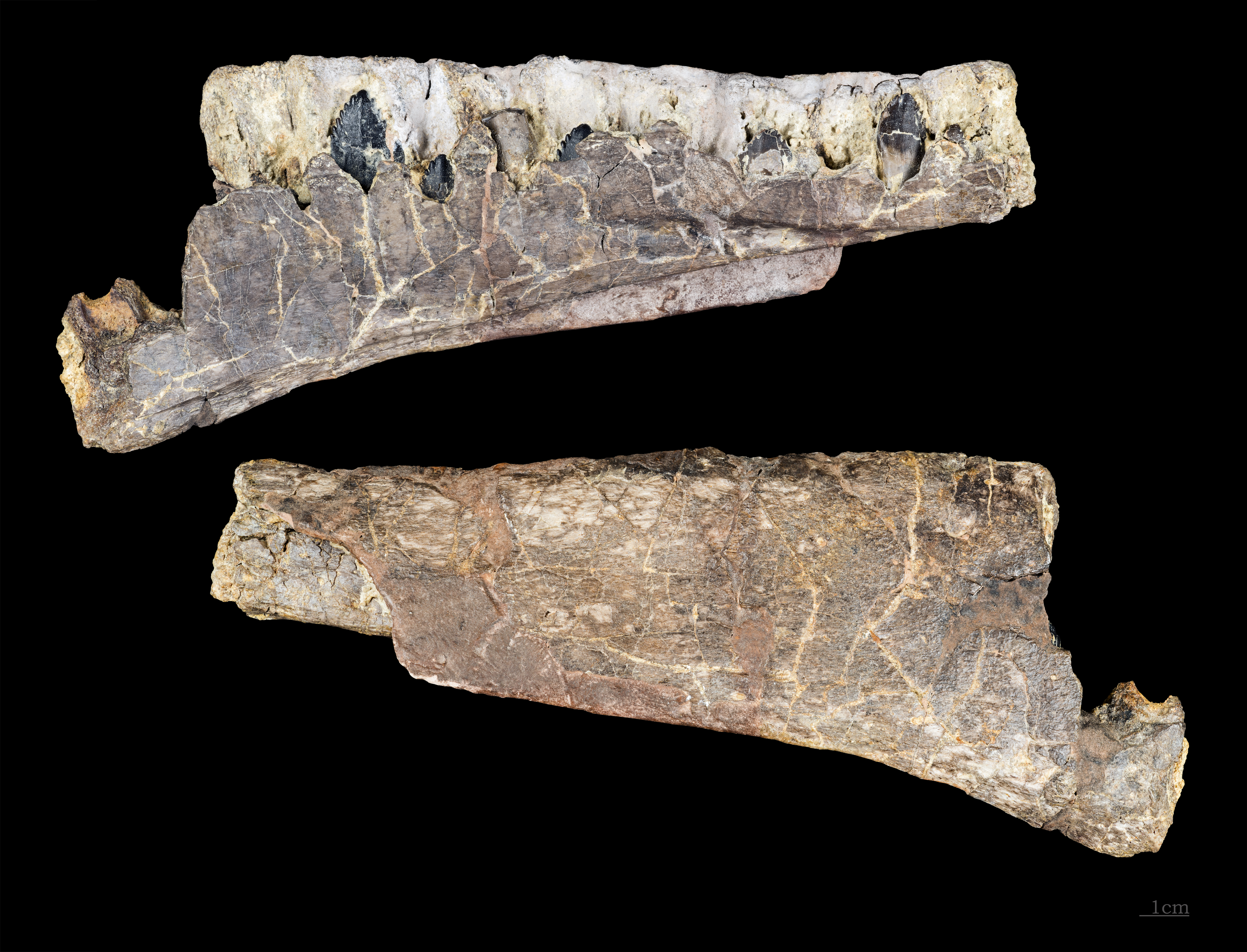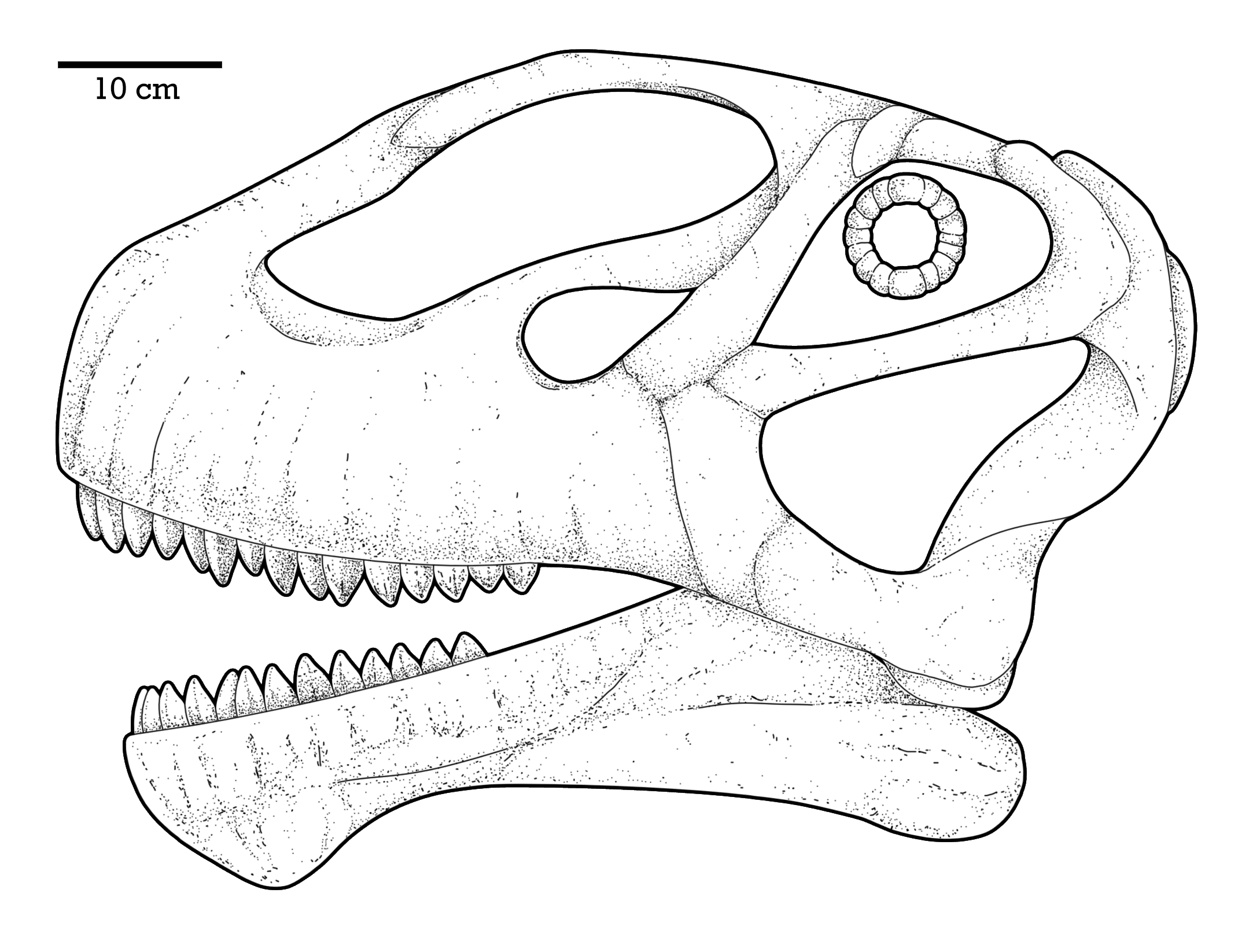|
Isalo III
The Isalo III Formation is a geological formation in Madagascar, off the eastern coast of Africa. It dates back to the Middle Jurassic.Weishampel et al., 2004, pp.542-543 The use of the term "Isalo III" is somewhat controversial as the two prior units Isalo I and II are Triassic cross-bedded sandstone units that form a continuous depositional sequence, while the "Isalo III" sandstones are not part of the same depositional sequence, and were deposited considerably later. and are perhaps better treated as part of several separate formations.Geiger et al., 2004 It is traditionally divided into two subunits the lower, Bajocian aged Isalo IIIa unit also known as the Beronono Formation and the upper, Bathonian aged Isalo IIIb unit also known as the Sakaraha Formation or Sakahara Formation. The Sakaraha Formation consists of sandstones, marls and carbonates and represents a coastal plain environment, and is laterally equivalent to the predominantly carbonate Bemaraha Formation, whic ... [...More Info...] [...Related Items...] OR: [Wikipedia] [Google] [Baidu] |
Bajocian
In the geologic timescale, the Bajocian is an age and stage in the Middle Jurassic. It lasted from approximately 170.3 Ma to around 168.3 Ma (million years ago). The Bajocian Age succeeds the Aalenian Age and precedes the Bathonian Age. Stratigraphic definitions The Bajocian Stage takes its name from the Latin name (Bajocae) of the town of Bayeux, in the region of Normandy in France. The stage was named and introduced in scientific literature by French palaeontologist Alcide d'Orbigny in 1842. The base of the Bajocian stage is defined as the place in the stratigraphic column where fossils of the ammonite genus '' Hyperlioceras'' first appear. A global reference profile (a GSSP) for the base is located at Murtinheira, close to Cabo Mondego in Portugal.The GSSP is described by Pavia & Enay (1997) The top of the Bajocian (the base of the Bathonian) is at the first appearance of ammonite species ''Parkinsonia convergens''. Subdivision The Bajocian is often divided into Lower/ ... [...More Info...] [...Related Items...] OR: [Wikipedia] [Google] [Baidu] |
Triassic
The Triassic ( ) is a geologic period and system (stratigraphy), system which spans 50.6 million years from the end of the Permian Period 251.902 million years ago (Year#Abbreviations yr and ya, Mya), to the beginning of the Jurassic Period 201.36 Mya. The Triassic is the first and shortest period of the Mesozoic, Mesozoic Era. Both the start and end of the period are marked by major extinction events. The Triassic Period is subdivided into three epochs: Early Triassic, Middle Triassic and Late Triassic. The Triassic began in the wake of the Permian–Triassic extinction event, which left the Earth's biosphere impoverished; it was well into the middle of the Triassic before life recovered its former diversity. Three categories of organisms can be distinguished in the Triassic record: survivors from the extinction event, new groups that flourished briefly, and other new groups that went on to dominate the Mesozoic Era. Reptiles, especially archosaurs, were the chief terrestrial vert ... [...More Info...] [...Related Items...] OR: [Wikipedia] [Google] [Baidu] |
Archaeodontosaurus
''Archaeodontosaurus'' ("ancient-toothed lizard") is a genus of sauropod dinosaur from the Middle Jurassic. Its fossils were found in the Isalo III Formation of Madagascar. The type species, ''Archaeodontosaurus descouensi'', was described in September 2005. The specific name honours the collector, Didier Descouens. It is a probable sauropod, with prosauropod-like teeth.Éric Buffetaut. 2005. A new sauropod dinosaur with prosauropod-like teeth from the Middle Jurassic of Madagascar. ''Bulletin de la Société Géologique de France'', 176(5), 467-473. It may be a basal member of Gravisauria Gravisauria is a clade of sauropod dinosaurs consisting of some genera, Vulcanodontidae and Eusauropoda.Allain, R. and Aquesbi, N. (2008). "Anatomy and phylogenetic relationships of ''Tazoudasaurus naimi'' (Dinosauria, Sauropoda) from the late Ea .... References External links dml.cmnh.org* Sauropods Dinosaurs of India and Madagascar Middle Jurassic dinosaurs of Africa Baj ... [...More Info...] [...Related Items...] OR: [Wikipedia] [Google] [Baidu] |
Lapparentosaurus Madagascariensis Left Pubis
''Lapparentosaurus'' is a genus of sauropod dinosaur from the Middle Jurassic. Its fossils were found in Madagascar (Isalo III Formation). The type species is ''L. madagascariensis''. Discovery and naming In 1895 Richard Lydekker named a new species of '' Bothriospondylus'', ''B. madagascariensis'' based on fossils found before 1894 by Joseph Thomas Last in the Majunga Basin in layers of the Bathonian, the Isalo III Formation. Because there was no real connection with this English form, in 1986 José Fernando Bonaparte named a separate genus. The type species, the only known, is ''Lapparentosaurus madagascariensis''. The generic name honours Albert-Félix de Lapparent. The holotype assigned by Bonaparte, MAA 91-92, consists of two neural arches. Much more abundant material has been referred, from at least three but perhaps as much as ten individuals from different growth stages. This includes vertebrae and limb elements but no skulls. The species is still lacking a good desc ... [...More Info...] [...Related Items...] OR: [Wikipedia] [Google] [Baidu] |
Turiasauria
Turiasauria is an unranked clade of basal sauropod dinosaurs known from Middle Jurassic to Early Cretaceous deposits in Europe, North America, and Africa. Description Turiasauria was originally erected by Royo-Torres et al. (2006) to include '' Turiasaurus'', '' Galveosaurus'' and '' Losillasaurus'', all of which hail from the Villar del Arzobispo Formation (Tithonian-Berriasian) of Spain. Turiasuria was defined by the authors as "all Eusauropoda closer to ''Turiasaurus riodevensis'' than to '' Saltasaurus loricatus''". Cladistic analysis (Royo-Torres ''et al.'', 2006; 1927) of 309 characters and 33 taxa suggests that the turiasaurians lie outside the Neosauropoda and form a monophyletic group. The clade is diagnosed by the presence of vertical neural spines, posterior centroparapohyseal laminae on the dorsal vertebrae, the absence of pre- and postspinal laminae on the dorsal vertebrae, the absence of a scapular acromial crest, the presence of a prominent humeral deltopector ... [...More Info...] [...Related Items...] OR: [Wikipedia] [Google] [Baidu] |
Narindasaurus
''Narindasaurus'' (meaning "lizard of Narinda Bay") is a genus of turiasaurian sauropod dinosaur from the Middle Jurassic Isalo III Formation of Madagascar. The type species, ''N. thevenini'' was formally described by Royo-Torres ''et al.'' in 2020. The holotype, which consists of one specimen, is currently stored at the Muséum national d’Histoire naturelle and has been since 1906 or 1907. Discovery and naming The holotype was discovered in the Isalo III Formation before 1894 by Joseph Thomas Last, and were briefly noted on by Paul Lemoine in 1906.Lemoine P. 1906. Études géologiques dans le nord de Madagascar. In: Herman A, ed. Contributions à l’histoire géologique de l’Océan Indien. ''Paris: Librairie Scientifique'', 1–520. Armand Thevenin (1861-1942) was the first to diagnose ''Narindasaurus''. In 1907, he placed it within the now obsolete species "''Bothriospondylus ''Bothriospondylus'' ("excavated vertebra") is a dubious genus of neosauropod sauropod dino ... [...More Info...] [...Related Items...] OR: [Wikipedia] [Google] [Baidu] |
Lapparentosaurus Femur
''Lapparentosaurus'' is a genus of sauropod dinosaur from the Middle Jurassic. Its fossils were found in Madagascar (Isalo III Formation). The type species is ''L. madagascariensis''. Discovery and naming In 1895 Richard Lydekker named a new species of '' Bothriospondylus'', ''B. madagascariensis'' based on fossils found before 1894 by Joseph Thomas Last in the Majunga Basin in layers of the Bathonian, the Isalo III Formation. Because there was no real connection with this English form, in 1986 José Fernando Bonaparte named a separate genus. The type species, the only known, is ''Lapparentosaurus madagascariensis''. The generic name honours Albert-Félix de Lapparent. The holotype assigned by Bonaparte, MAA 91-92, consists of two neural arches. Much more abundant material has been referred, from at least three but perhaps as much as ten individuals from different growth stages. This includes vertebrae and limb elements but no skulls. The species is still lacking a good desc ... [...More Info...] [...Related Items...] OR: [Wikipedia] [Google] [Baidu] |
Cetiosauridae
Cetiosauridae is a family of sauropod dinosaurs which was first proposed by Richard Lydekker in 1888. While traditionally a wastebasket taxon containing various unrelated species, some recent studies have found that it may represent a natural clade. Alongside ''Cetiosaurus'' from the Middle Jurassic of Britain, other taxa recently assigned to the family include ''Lapparentosaurus'' from the Middle Jurassic of Madagascar, and ''Patagosaurus'' from the late Early-Middle Jurassic of Patagonia, which share autapomorphies with ''Cetiosaurus'' that are not shared by other eusauropods. Additionally, at least one study has suggested that the mamenchisaurids Mamenchisauridae is a family of sauropod dinosaurs belonging to Eusauropoda known from the Jurassic and Early Cretaceous of Asia and Africa. Some members of the group reached gigantic sizes, amongst the largest of all sauropods. Classification T ... may represent a sub-group of the cetiosaurids, which would be termed Mamenchisau ... [...More Info...] [...Related Items...] OR: [Wikipedia] [Google] [Baidu] |
Titanosauriform
Macronaria is a clade of sauropod dinosaurs. Macronarians are named after the large diameter of the nasal opening of their skull, known as the external naris, which exceeded the size of the orbit, the skull opening where the eye is located (hence ''macro''- meaning large, and –''naria'' meaning nose). Fossil evidence suggests that macronarian dinosaurs lived from the Middle Jurassic (Bathonian) through the Late Cretaceous (Maastrichtian). Macronarians have been found globally, including discoveries in Argentina, the United States, Portugal, China, and Tanzania. Like other sauropods, they are known to have inhabited primarily terrestrial areas, and little evidence exists to suggest that they spent much time in coastal environments. Macronarians are diagnosed through their distinct characters on their skulls, as well as appendicular and vertebral characters. Macronaria is composed of several subclades and families notably including Camarasauridae and Titanosauriformes, among seve ... [...More Info...] [...Related Items...] OR: [Wikipedia] [Google] [Baidu] |
Lapparentosaurus
''Lapparentosaurus'' is a genus of sauropod dinosaur from the Middle Jurassic. Its fossils were found in Madagascar (Isalo III Formation). The type species is ''L. madagascariensis''. Discovery and naming In 1895 Richard Lydekker named a new species of ''Bothriospondylus'', ''B. madagascariensis'' based on fossils found before 1894 by Joseph Thomas Last in the Majunga Basin in layers of the Bathonian, the Isalo III Formation. Because there was no real connection with this English form, in 1986 José Fernando Bonaparte named a separate genus. The type species, the only known, is ''Lapparentosaurus madagascariensis''. The generic name honours Albert-Félix de Lapparent. The holotype assigned by Bonaparte, MAA 91-92, consists of two neural arches. Much more abundant material has been referred, from at least three but perhaps as much as ten individuals from different growth stages. This includes vertebrae and limb elements but no skulls. The species is still lacking a good descrip ... [...More Info...] [...Related Items...] OR: [Wikipedia] [Google] [Baidu] |
Bemaraha Formation
The Bemaraha Formation is a Middle Jurassic (early Bajocian to early Bathonian) geological formation of the Morondava Basin of Madagascar. The lime mudstones, grainstones and limestones of the formation were deposited in lagoonal and reefal environments. Fossils of groups of invertebrates and theropod and sauropod tracks have been found in the formation. at Fossilworks.org The Sahalaly River tracksite yielded a single trackway belonging to a quadrupedal dinosaur, possibly a sauropod.Wagensommer et al., 2010, p.127 Sauropod tracks are rare, making up as little as 1 percent of ... [...More Info...] [...Related Items...] OR: [Wikipedia] [Google] [Baidu] |




